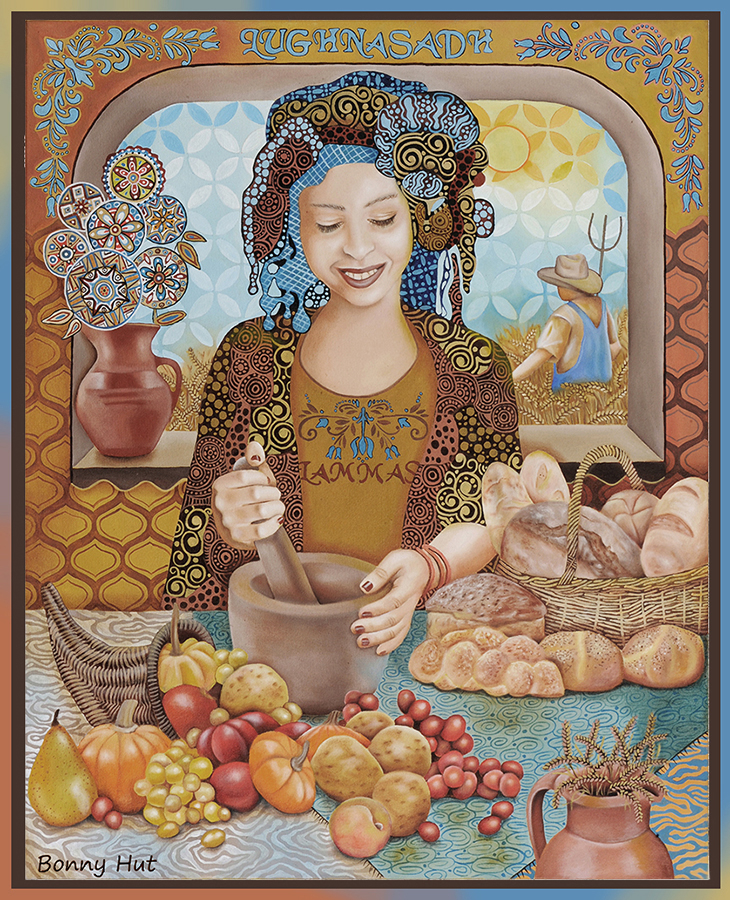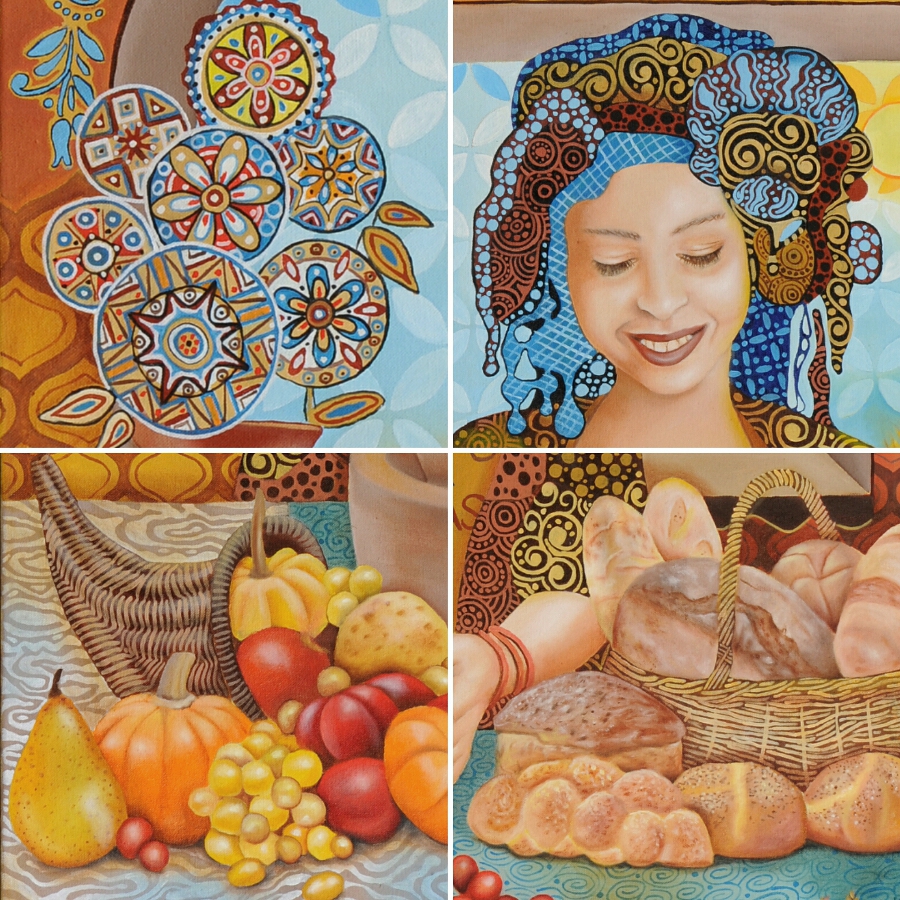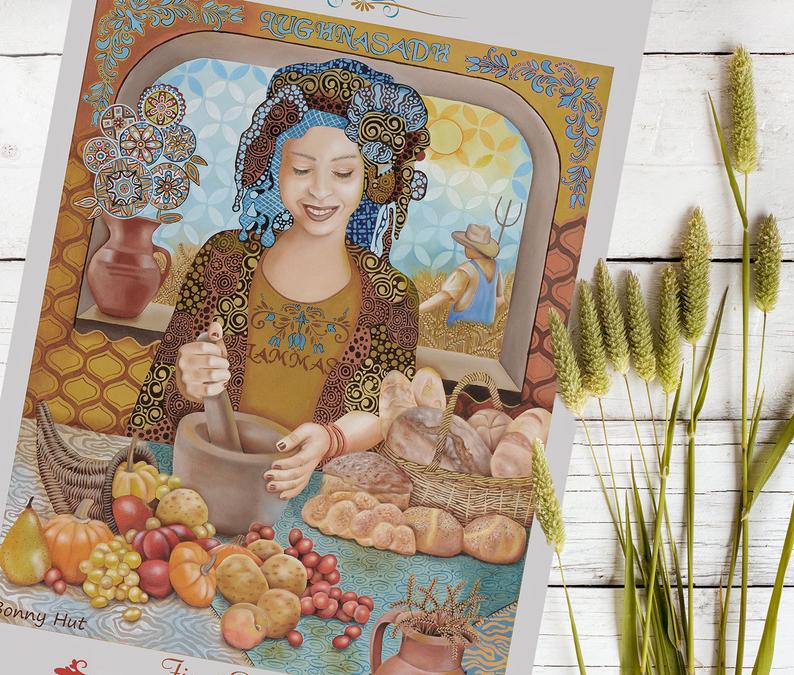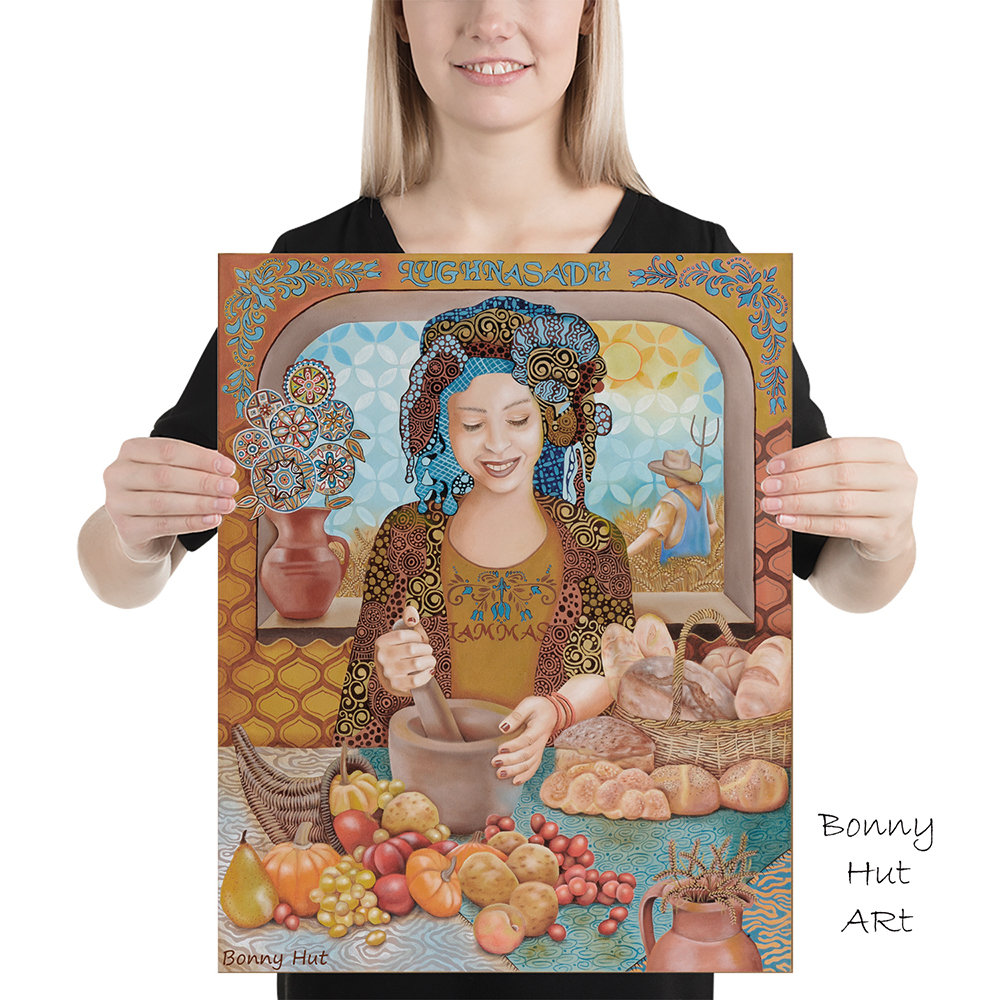Lammas Day (Anglo-Saxon hlaf-mas,
"loaf-mass") was initially a holiday celebrated
in some English-speaking countries
in the Northern Hemisphere.
It is a festival to
mark the annual wheat harvest,
and is the first harvest festival of
the year. On this day it was customary to bring to church a
loaf made from the new crop, which began to be harvested at Lammastide, which
falls at the halfway point between the summer Solstice and
Autumn September Equinox.
The loaf was blessed and in Anglo-Saxon England it might
be employed afterwards in protective rituals.
In many parts of England,
tenants were bound to present freshly harvested wheat to their
landlords on or before the first day of August. In the Anglo-Saxon Chronicle, where it is
referred to regularly, it is called "the feast of first
fruits". The blessing of first
fruits was performed annually in both the Eastern and Western Churches on the first or the
sixth of August (the latter being the feast of the Transfiguration of Christ).
Lughnasadh or
Lughnasa is traditonally a Gaelic festival marking the
beginning of the harvest season. Historically is was widely observed
and celebrated throughout Ireland, Scotland and the Isle of Man. It
corresponds to other European harvest festivals such as the Welsh Gwyl
Awst and the English Lammas.
The festival is named after the God
Lugh. It involved great gatherings that included religious ceremonies,
ritual athletic contests (most notably the Tailteann Games), feasting, matchmaking and
trading.
Lughnasadh customs persisted widely
until the 20th century, with the event being variously named 'Garland
Sunday', 'Bilberry Sunday', 'Mountain Sunday' and 'Crom
Dubh Sunday'. The custom of climbing hills and
mountains at Lughnasadh has survived in some areas, although it has
been re-cast as a Christian pilgrimage. The best known is the 'Reek
Sunday' pilgrimage to the top of Croagh Patrick on the last Sunday in
July. A number of fairs are
also believed to be survivals of Lughnasadh, for example the Puck
Fair. Since the late 20th century, Celtic neopagans have observed
Lughnasadh, or something based on it, as a religious holiday. In some
places, elements of the festival have been revived as a cultural event.

|




